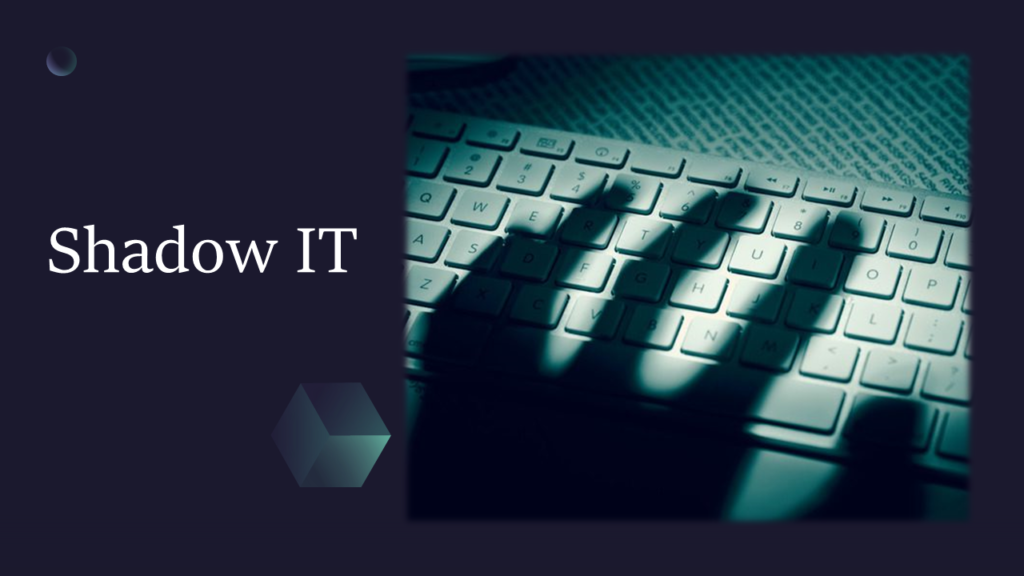In today’s digital age, technology is the backbone of most businesses. From communication and collaboration tools to data storage and analytics platforms, companies rely heavily on information technology (IT) infrastructure. However, a growing trend known as shadow IT poses a significant threat to data security and overall IT governance.

What is Shadow IT?
Shadow IT refers to the use of information technology systems, devices, software, applications, and services without explicit IT department approval. This includes everything from employees using personal cloud storage for work files to teams adopting unauthorized video conferencing platforms. Unlike standard IT infrastructure that’s centrally managed and secured, shadow IT operates outside the organization’s official IT purview.
Why Does Shadow IT Exist?
The root of Shadow IT lies in the limitations and restrictions imposed by centralized IT systems.
Several factors contribute to the rise of shadow IT:
- Slow IT Approval Processes: Lengthy approval times for new IT requests can push employees to seek alternative solutions to expedite their work.
- Limited IT Resources: When IT departments are stretched thin, employees may resort to readily available shadow IT solutions to meet their immediate needs.
- Lack of User-Friendly Options: Cumbersome or outdated IT-approved tools can prompt employees to seek more user-friendly alternatives outside the official channels.
- Unfamiliarity with IT Policies: Insufficient awareness of IT security policies and acceptable use guidelines can lead to unintentional shadow IT adoption.
The Risks of Shadow IT
While shadow IT can offer temporary workarounds and address immediate needs, it carries significant security risks:
- Data Breaches: Unsanctioned cloud storage platforms or applications may lack robust security measures, increasing the vulnerability of sensitive company data to breaches and leaks.
- Malware Infections: Downloading unauthorized software or accessing insecure websites through shadow IT can expose devices to malware attacks, compromising data integrity and system functionality.
- Compliance Issues: Shadow IT can lead to non-compliance with industry regulations and data privacy laws, potentially resulting in hefty fines and reputational damage.
- Limited Visibility and Control: The IT department loses visibility and control over data stored and accessed through unauthorized platforms, making it difficult to enforce security protocols and troubleshoot issues.
Examples of Shadow IT
Here are some common examples of shadow IT activities:
- Using personal cloud storage services like Dropbox or Google Drive to store and share work files.
- Employing unauthorized video conferencing platforms like Zoom (without proper IT oversight).
- Downloading and using productivity apps not approved by the IT department.
- Connecting personal devices like laptops or smartphones to the company network without following security protocols.
- Subscribing to online collaboration tools outside of the IT-approved suite.
Mitigating the Shadow IT Threat
Organizations can implement strategies to minimize the risks associated with shadow IT:
- Streamline IT Approval Processes: Shorten approval times for new IT requests to address employee needs efficiently.
- Invest in User-Friendly Solutions: Provide employees with IT-approved tools that are user-friendly and cater to their work requirements.
- Educate and Communicate: Routinely educate employees about IT policies, acceptable use guidelines, and the risks of shadow IT.
- Promote Collaboration: Foster open communication between employees and the IT department to understand user needs and collaboratively find solutions.
- Consider a BYOD (Bring Your Own Device) Policy: Develop a well-defined BYOD policy outlining security requirements and acceptable use practices for personal devices used for work purposes.
Benefits of Managing Shadow IT
By taking proactive steps to manage shadow IT, organizations can reap several benefits:
- Enhanced Security: Reduced risk of data breaches, malware infections, and non-compliance issues.
- Improved IT Visibility and Control: Increased oversight of all devices and applications accessing company data.
- Greater Employee Productivity: Streamlined workflows achieved by providing employees with user-friendly and accessible IT solutions.
- Cost Savings: Potential reduction in costs associated with data breaches and security incidents that stem from shadow IT activities.
- Empowered and Engaged Workforce: Fosters a more collaborative environment where employees feel empowered to voice their needs and contribute to finding secure and efficient IT solutions.
Conclusion
Shadow IT is a growing concern for organizations of all sizes. However, by understanding the root causes, potential risks, and appropriate mitigation strategies, businesses can effectively manage shadow IT and ensure a secure and efficient IT environment. By fostering collaboration, communication, and education, organizations can empower employees to be responsible digital citizens while harnessing the full potential of their IT infrastructure.
==================================